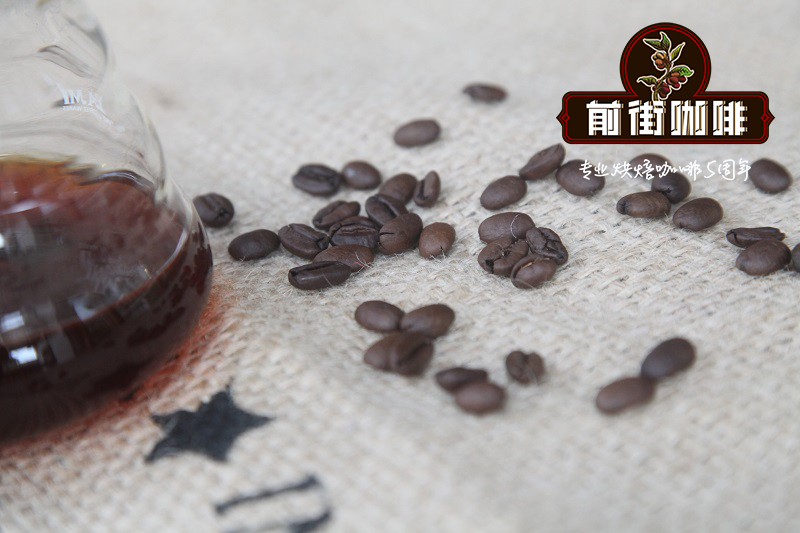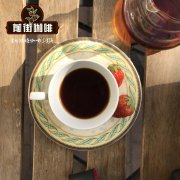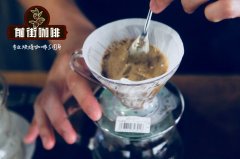Description of characteristics and Flavor of Malaba Coffee description of Regional characteristics of planting areas of Malaba Coffee

Professional coffee knowledge exchange more coffee bean information please follow the coffee workshop (Wechat official account cafe_style)
With regard to wind-stained Malabar, "Wind-stained Malaba Coffee" is a coffee produced in the Malabar region of India, with strong wheat tea flavor, bean appearance and flavor. Coffee since the 17th century, the unique flavor of Indian-style Malaba coffee has been favored by Europeans. And this process and result is also a beautiful accident.
In the 17th and 18th centuries, India shipped coffee beans to Europe by sailboat. The voyage took six months. The raw beans placed in the boathouse absorbed the moisture and salty taste of the sea. This process made the coffee beans produce a "natural" qualitative change. The color of the raw beans slowly changed from dark green to the yellowish brown of rice, and the original fruit acid content of the beans was greatly reduced. But unexpectedly developed a strong nutty and shell aroma, the roasted coffee tasted full of tea, with the flavor of black rice tea or wheat tea, which stunned Europeans.
Indian coffee is originally thick, low and less sour, while wind-stained coffee beans are made from sun-cured beans. All the factories dealing with wind-stained coffee beans face to the west, facing the salty monsoon blowing from the southwest sea. The coffee beans are laid flat in the wind field, the windows are all open, and the wind stains to a certain extent, and then enter the bag, but because the beans will expand a lot in the process, so the coffee beans can not be filled too full, and the coffee bags should not be piled up too dense to avoid mildew and spoilage due to airtight, and from time to time to pour out the coffee beans and replace the sacks. To avoid the breeding of mold is a very time-consuming and labor-consuming project. The weathering period is about 12 to 16 weeks. After ripening, the weevil is fumigated to drive away the weevil. Finally, after manual screening of beans, pick out the failed beans that have not turned golden. After three to four months of wind treatment, the volume of Malaba raw beans expands by one to two times, resulting in a decrease in weight and density.
Indian style-stained Malaba coffee beans, although the beans are fat, they are soft beans that are strong and dry. Because the coffee beans have been exposed to the moist monsoon for a long time, not only the color of the beans has turned yellow and is known as the Golden Malaba Coffee, the acidity of the coffee itself has also been greatly reduced and the taste is very special. Wind-soaked beans are drunk individually, with rich aroma of wheat and tea. For hundreds of years, it has been widely used by European coffee manufacturers to prepare mixed coffee beans, which can increase the consistency and tea feel. Make a good espresso.
Important Notice :
前街咖啡 FrontStreet Coffee has moved to new addredd:
FrontStreet Coffee Address: 315,Donghua East Road,GuangZhou
Tel:020 38364473
- Prev

The History of Malaba Coffee the Origin and Development of Malaba Coffee
Professional coffee knowledge exchange more coffee bean information Please follow the coffee workshop (Wechat official account cafe_style) when it comes to Asian coffee, most people will first think of Indonesian gold Manning, Toraya, or Vietnamese coffee, Laos coffee, as well as recently rammed up Taiwan coffee, China Yunnan coffee and so on. Indian coffee has a long history, and it is also an Asian coffee.
- Next

Is Malaba Coffee of good quality? is Malaba Coffee good to drink by hand? characteristics of Malaba Coffee treatment
Professional coffee knowledge exchange more coffee bean information Please follow the coffee workshop (Wechat official account cafe_style) it is said that a long time ago, when raw coffee beans were shipped from India to Europe, changes were caused by high temperatures and moisture in the Indian Ocean, and this is where "wind stains" came from. In addition to the expansion and enlargement of the size of the raw beans after wind-soaked, the color of the raw beans is also changed from green to green.
Related
- Detailed explanation of Jadeite planting Land in Panamanian Jadeite Manor introduction to the grading system of Jadeite competitive bidding, Red bid, Green bid and Rose Summer
- Story of Coffee planting in Brenka region of Costa Rica Stonehenge Manor anaerobic heavy honey treatment of flavor mouth
- What's on the barrel of Blue Mountain Coffee beans?
- Can American coffee also pull flowers? How to use hot American style to pull out a good-looking pattern?
- Can you make a cold extract with coffee beans? What is the right proportion for cold-extracted coffee formula?
- Indonesian PWN Gold Mandrine Coffee Origin Features Flavor How to Chong? Mandolin coffee is American.
- A brief introduction to the flavor characteristics of Brazilian yellow bourbon coffee beans
- What is the effect of different water quality on the flavor of cold-extracted coffee? What kind of water is best for brewing coffee?
- Why do you think of Rose Summer whenever you mention Panamanian coffee?
- Introduction to the characteristics of authentic blue mountain coffee bean producing areas? What is the CIB Coffee Authority in Jamaica?

